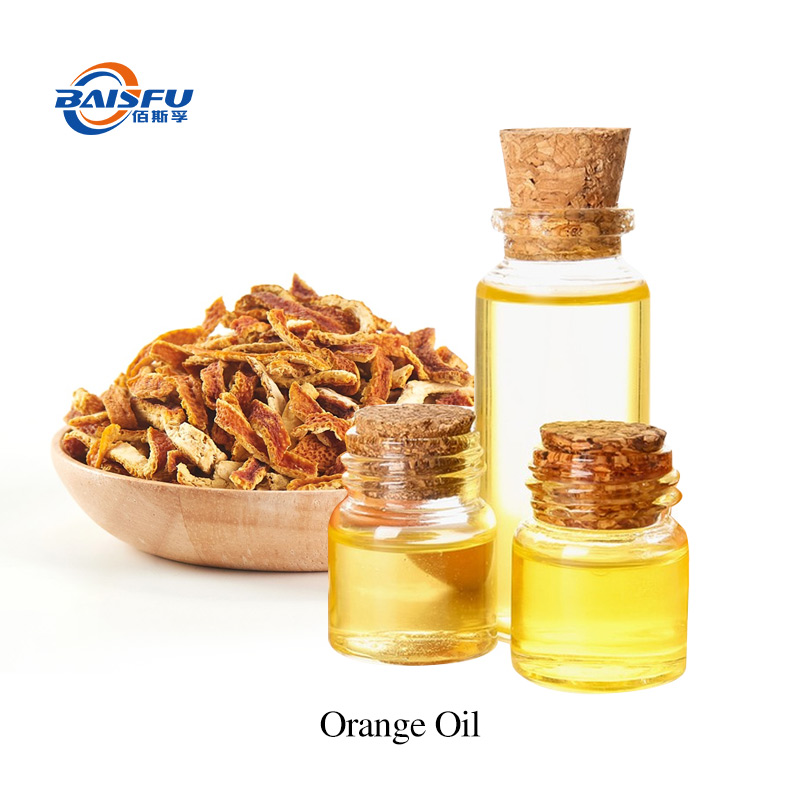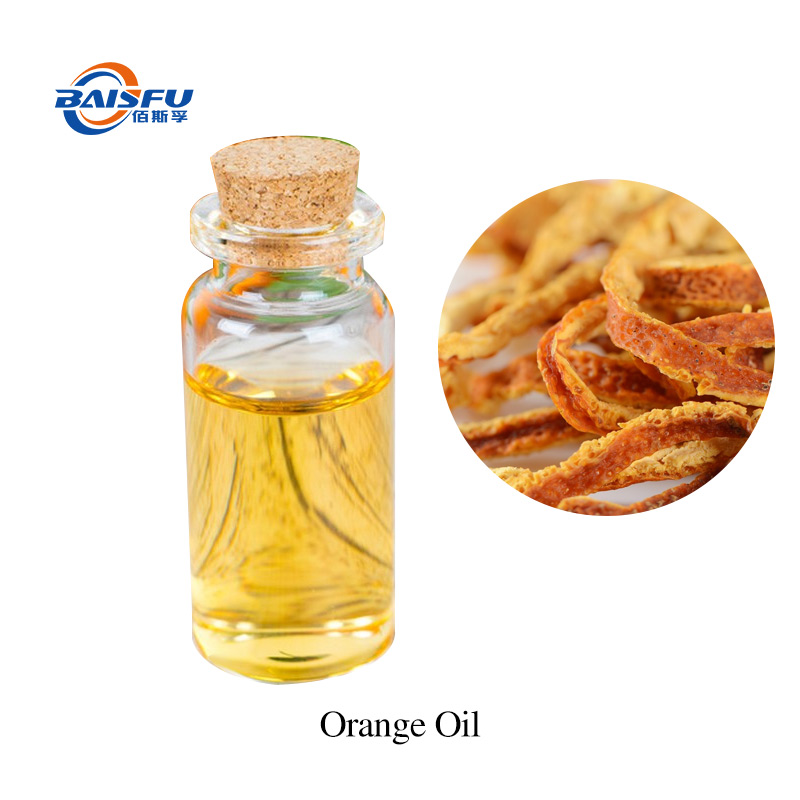
CAS:8008-31-9
Density:0.846 g/mL at 25 °C
Boling Point:178 °C(lit.)
Flash Point:133 °F
Appearance:Liquid
Storage:Condition Room Temprature
Refractive Index:n20/D 1.4745
Physical and Chemical Properties :
Chemical nature orange red to orange brown volatile essential oil, from immature fruits as raw material producers often appear green. It has a comfortable orange aroma. Soluble in most non-volatile oils, mineral oils and ethanol, slightly soluble in propylene glycol, almost insoluble in glycerol.
Use:Use 1, China's GB 2760-98 provisions for the allowed use of edible spices. Mainly used for soft drinks, ice cream and candy.
2, for the deployment of food flavor, tobacco flavor, occasionally also used for the deployment of daily flavor.
3, coating agent; Emulsifier; Forming AIDS; Organization modifier
8008-31-9 - Nature
cold-pressed orange oil obtained from cold-pressed mature orange peel is a yellow or yellow-green volatile liquid that often exhibits light blue fluorescence under diffuse astigmatism. With orange aroma, long-term storage in the air can be oxidized to produce turpentine odor. Soluble in ethyl acetate, acetone, ether and other most organic solvents, difficult to dissolve in water.
8008-31-9 - Uses and synthesis methods
overview
Orange oil is also called orange peel oil and orange oil. A yellow liquid distilled from fresh orange peel. The yield of distillation is 1.5% ~ 2%, and the yield of squeezing method is about 0.5%.
Main Ingredients
The main components of orange oil are limonene, citral, decanal, methyl N-methylanthranilate, etc.
content analysis
accurately weigh about 10g of the sample and determine it by hydroxylamine/terbutanol method in aldehyde and ketone determination method (OT-7). The equivalent factor (e) in the calculation is 156.26. Before titration, stand for 30min at room temperature. From this, the aldehyde content calculated as decanal is calculated.
Toxicity
GRAS(F, EMA;FDA,& sect;182.20,2000).
use limited
FEMA(mg/kg): soft drink 62: cold drink 160; Candy 350; Baked food 190; Pudding 30; Gum candy 83.
production method
1. sunflower (Helianthas annuu$) seeds are extracted by mechanical pressing or solvent extraction, decolorization and deodorization to remove free fatty acids, phospholipids, pigments, odor substances and other non-grease substances.
2. it is obtained by cold pressing the mature peel of rutaceae plant citrus reticulata or some other similar species. the fresh peel is first impregnated with dilute lime water, cleaned and pressed, sprayed with dilute sodium sulfate when used, precipitated, filtered and centrifuged. The yield is 1.8% ~ 2.4% (the distillation quality is poor, the yield is high, about 2.7% ~ 3.5%). The main production in China (Zhejiang, Fujian, Sichuan, etc.) and Italy, Japan and other countries.








